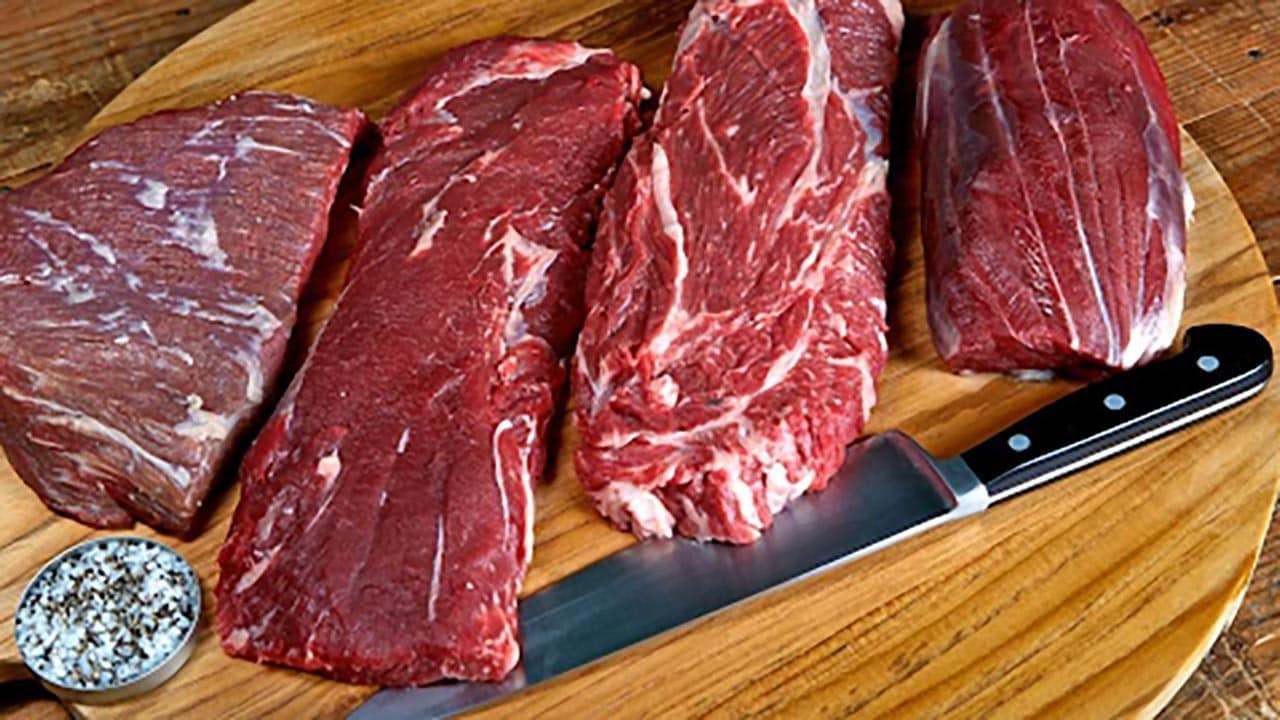As Hospitality Strivers, Chefs work passionately day and night to create an experience for the visitors to our restaurants and purchasers of online and take-out offerings. We have experienced meat shortages before - floods, droughts, and economic downturns have all affected availability. COVID-19 brought new challenges, even completely shutting restaurants down for a while. People were forced to cook at home, yet grocery stores were unable to get the meat they needed to stock their coolers. Restaurants and grocery stores operate on a different supply chain so when we were allowed to reopen, restaurants were able to get fresh meat, but it came at a cost. Early on, the increase was around 8% but had climbed up to an unprecedented 20% within 9 months. One way to help keep costs down is to use the cheapest cuts of beef and other meats cooked in delicious ways and priced at a profit to help you get back on track toward your goals of making your business a long-term success.
What underrated cuts of meat should be on my menu?
These are a few underrated cuts of beef that are going to be in the more expensive category, but you can offer them on your menu as specials for the clientele that want them. Be sure you price these accurately so you are making a profit on them.
- Ribeye Cap Steaks - The rib caps are part of the ribeye cut. This area is not used for much movement, so it has an extremely tender texture. The cut also doesn’t come from a fatty part of a cow, so there’s no excess fat but just the right amount to keep it tender and full of flavor.
- Skirt Steaks, Flank Steak - Located below the loin, this steak is a lean cut that comes from the abdominal muscles of the cow. As a result, it contains a relatively high amount of grain or meat fiber. Flank steaks are best marinated before grilling to bring out the intense beefy flavor.
- Topside or Silverside - This is the meat from the thigh. The Silverside is the back and has a thin layer of silvery tissue. This is excellent as a roast, sliced thin into layers or for recipes in which the beef is cooked, stewed, or braised.

What are the cheapest steak cuts that we can offer and still charge a premium price for?
There are several best-value steak cuts that you can purchase at a less expensive price and charge at a premium price allowing you to make a profit on your menu offerings. It is advisable to price these at a higher profit percentage.
There's Major, Petite Tender, or Hanger Steak - One of the inexpensive cuts of beef with the most tender texture, and delicate taste. Cut into medallions this steak looks, acts, and tastes like a filet mignon.

- Chuck Steak - This cut comes from the chuck primal of the cow. This is the shoulder portion which includes a great deal of muscle. With the right cut, and a good marinade these steaks can be as delicious as a ribeye.
- Rump Steak - This cut, obviously, comes from the backside of the cow. It is one of the cheapest cuts of beef, not as tender as sirloin, but extremely flavorful. Pan sear, then move to the oven and cook to medium or medium-rare. Be sure to let rest for 10 minutes before slicing.
- Chuck Eye Steak - This cut is known as the “poor man’s ribeye”. It comes from the same place as the ribeye but is sliced thinner. Cook the same as the ribeye, but be sure to marinade before. Let the mild and buttery taste shine through.
- Denver Steak - This is one of the cheapest steak cuts you can find. The cut is usually 1” thick, not a filet. It comes from a muscular area, so cut against the grain, marinade, and do not cook past medium-rare to ensure tenderness.
- Merlot Cut - This steak comes from the medial portion of the heel muscle of the hind shank. It is similar to a flank steak but has a finer grain. The name comes from its beautiful red color. Cook medium-rare to medium, let rest 5 minutes, and always cut against the grain.
- Ranch Steak, Arm Steak, Boneless Chuck Shoulder Center Cut Steak - Muscular but very flavorful. Trim as much of the fat on the outside as possible. Usually cut in 1” thickness and 7-8 ounce steaks. An oil-based marinade works well to keep moist, sear both sides quickly to trap in flavor, and as always, let rest before plating.
- Pork Top Sirloin Steak - One of the cheapest cuts of pork. More connective tissue than the popular pork rib chops, so best when seared and then roasted which will allow the tissue to soften and fat to melt.

Thomas Keller, one of the most highly recognized chefs in the US instructs several of the Masterclasses in this series. Chef Keller has won more awards and accolades personally and for his restaurants than any other American chef. He has been awarded numerous three-star Michelin awards, and in 2017 led a USA team to win the first gold medal in the international Bocuse d’Or, the Olympics of the culinary world. His philosophy is to focus on one guest at a time. ”A great meal is not one that just fills you up. A great meal is a journey that returns you to sources of pleasure you may have forgotten and takes you to places you haven’t been before.”

Want to master new culinary skills? Get access to FREE ONLINE CHEF COURSES AND CHEF TRAINING: such as STEAK, BUTCHERING & AGEING
How do we price these best value cuts of meat on the menu along with the more expensive cuts our customers are more familiar with?
It can sometimes be very difficult for passionate customer pleasers to price the entrees when you know that you were able to purchase inexpensive cuts of beef. But do not forget that you had to put additional work into that meat to bring out the beefy, buttery, melt-in-the-mouth flavor. Many of these best-value steak cuts require overnight marinade, special tenderizing, and special care to get them ready to enjoy. The Small Business Balance site has some great advice for restaurateurs on how to calculate the percentages you should use for establishing your menu costs and profit margins. Most restaurants use a .28 -.35 calculation to determine the markup for their foods. For example, if your steak costs PHP 250, divided by .35= PHP 715. That is just for the meat. You need to cost out every item on the plate. Also the effort to get that steak ready, the chef’s time, the servers, greeter, clean up, and anyone that has any part in making that meal a wonderful experience for the customer. Depending on the size and type of your establishment, you may update your menu annually, every 6 months or more frequently. That process can be expensive and time-consuming, but to adjust the prices that you need, and offer these new steaks, it will be a necessity. You may be able to find a creative way to make an addition to your current menu with the steaks on it. Please do not tape over, white-out, or use any other method to alter the prices on your current offerings. Not only does this look tacky, but it creates distrust with your customers. A few may remember that your 8 oz. filet mignon plate, with salad, was PHP 1,200 and now is PHP 1,400 on the new menu. But if you make the change obvious people that have never noticed the price will speculate about what the price was.
Chef Darrell Smith Predicts The Future Of Restaurants, Post COVID-19,

How to not only survive but thrive in this unprecedented time.
COVID-19 regulations brought about many expensive changes for the Hospitality/Food Service industry. But people like us will continue to give all we have to make our customer’s experience the very best it can be even if that means in a styrofoam container to take home, or at a table with only 6 other customers in the building. We will prepare, cook and serve to the very best of our abilities. By using inexpensive cuts of beef in new and ingenious ways, we can keep our customers loyal and our businesses thriving. And when the powers that be finally get hold of this virus and we can experience our new normal, we will all be thrilled to bring back our staff and “play” for full houses again.



